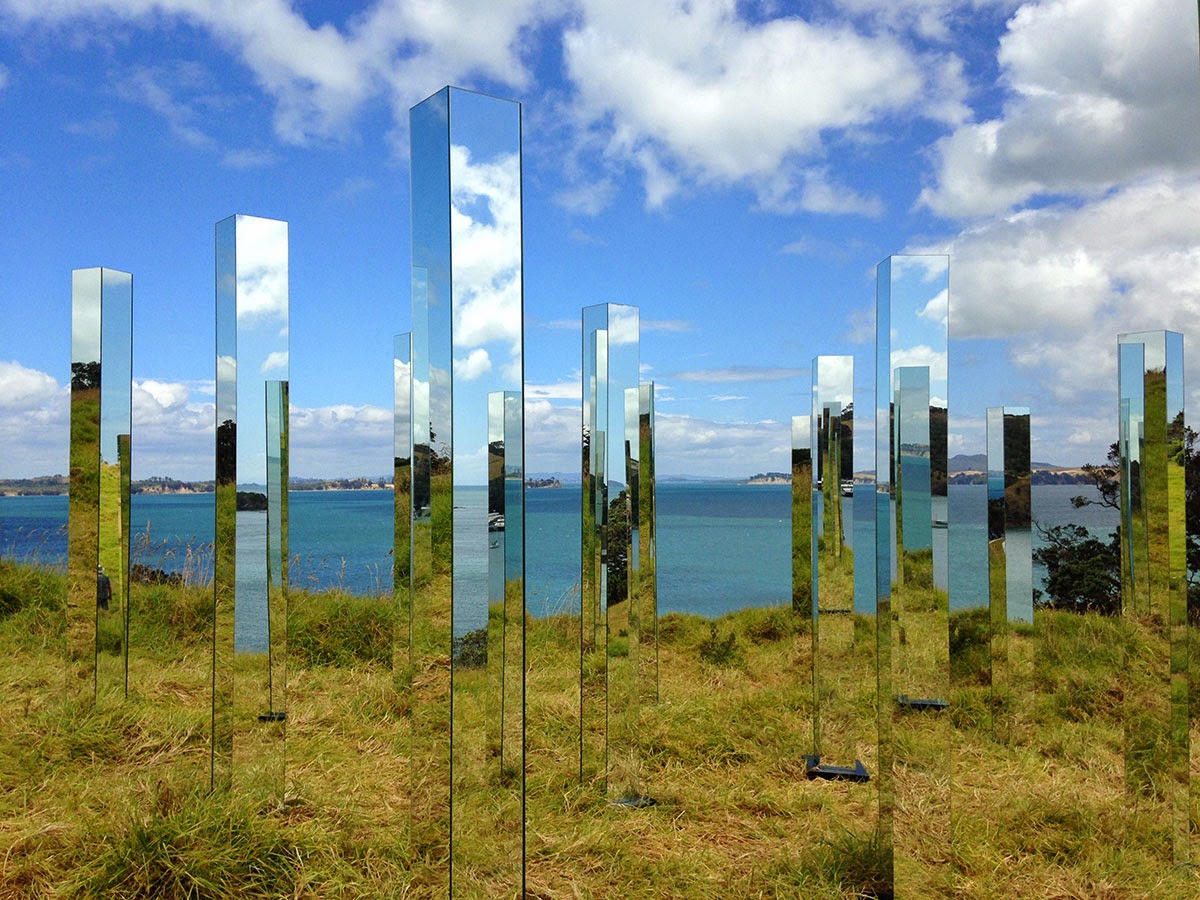 |
| Landform by Veronica Herber |
A simple but effective installation consisting of 1,850 meters of paper masking tape held in place by 4,000+ wire staples created by Veronica Herber was one of the most successful works in the biennial Headland Sculpture on the Gulf in 2015. It stops you in your tracks, and engages you in looking at a "landform" selected by the artist that you would otherwise casually walk by, without taking any particular notice. The application of swirling white bands along the curves of a gentle hill call attention to the contours of the land and the history of its use. The white lines suggest the measuring and mapping carried out by explorers, the inventories and surveys taken by developers. What used to be here? What plans are underway for the future of this place?
The site is reminiscent of typical hills and vistas seen on the North Island in New Zealand, where the shape of the terrain was first revealed when the land was stripped of trees by loggers and the bush was cleared for farms and ranches. Now vast fields are used for grazing sheep; New Zealand is home to millions of sheep, three for every human inhabitant, is the rumor.
When the field was cleared, one lone tree was left standing off center, perhaps spared to offer shade to a lone shepherd. What will be its fate?
Of course, I am just spinning my own associations. Herber describes her approach to art as process-based, and, when you think about it, affixing the tape to the ground in enormous concentric circles must have been an intense, iterative process, like planting fine seeds or mending fault lines:
My practice is based on an interest in process and materiality, I combine this with the chance element of site specific work. The site itself determines the starting point and the ensuing conversation.
The material I have been exploring for the past two years is masking tape. Over time I have developed a masking tape webbing that has qualities of camouflage and the ability to shapeshift its way from surface to surface transforming spaces and ultimately itself.
When becoming deeply engrossed in materiality there is a stripping away of meaning and a possibility of direct experience with the material....To stop myself getting bound up in the short-term gain of visual aesthetic rewards, I always go back to the material itself and seek the answers there.
More information about Headland Sculpture on the Gulf, Waiheke Island, New Zealand: sculptureonthegulf.co.nz/









